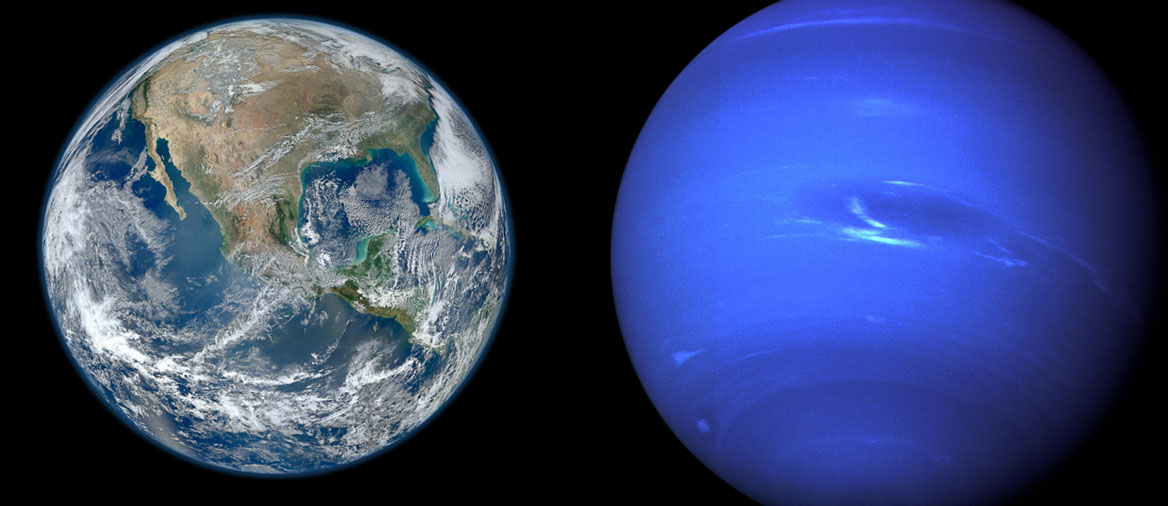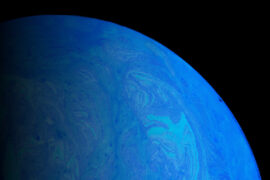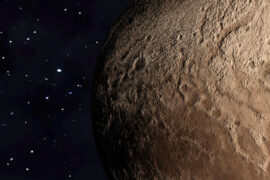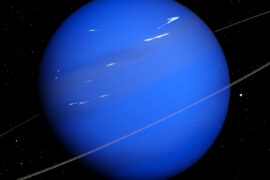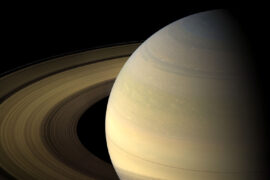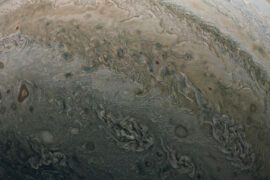Neptune is the farthest planet in the Solar system. As such, it is one of the hardest planets to study and there is still much that we don’t know about it.
Neptune wasn’t discovered until 1846. The discovery is attributed to Johann Galle, Urbain, LeVerrier, and John Couch Adams although some other astronomers like Galileo had observed centuries before but mistook it for a star.
To give you an idea of how far away Neptune is, it is almost 30 times farther away from Earth than the Sun. With such a large distance between both planets, is it possible that Neptune and Earth have anything in common?
In this article, we’ll take a look at the differences and similarities between Earth and Neptune so we can learn more about both of them as well as the rest of the Solar system.
Earth vs Neptune comparison
| Earth | Neptune | |
|---|---|---|
| Position in the Solar system | 3 | 8 |
| Distance from the Sun (avg) | 150 million km | 4,500 million km (2.7 billion miles) |
| Radius | 6,371 km | 24,622 km |
| Mass | 5.97237 × 1024 kg | 1.024 × 1026 kg |
| Rotation period (1 day) | 24 hours | 16 hours 6 minutes |
| Rotation speed | 1,674.4 km/h | 9,650 km/h |
| Orbit period (1 year) | 365 days | 164.8 years |
| Orbital speed | 29.78 km/s | 5.43 km/s |
| Average temperature | 14 °C | −201 °C |
| Surface pressure | 101.325 kPa | > 100,000 kPa |
| Surface gravity | 9.8 m/s2 | 11.15 m/s2 |
| Density | 5.52 g/cm3 | 1.63 g/cm3 |
| Escape Velocity | 11.18 km/s | 23.5 km/s |
| Albedo | 0.367 | 0.29 |
| Satellites (Moons) | 1 | 14 |
| Core | rock | rock, metals |
| Atmosphere | 78% N, 21% O | 78.7% H, 15% O, 5.5% He, 1.5% CH4, traces of others |
Earth vs Neptune size comparison
The most obvious difference between Earth and Neptune is their size. The radius of Neptune is almost 4 times larger than Earth’s. As a result, you could fit 57 Earth-sized planets into just one Neptune.
The following image shows the size difference between Earth and Neptune to scale.
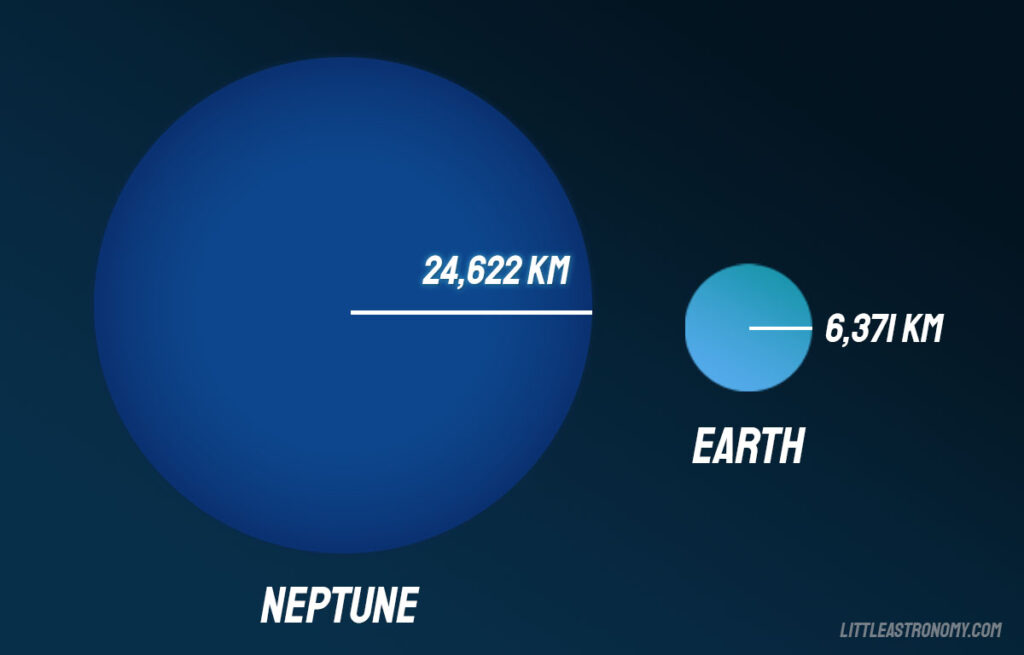
Earth and Neptune similarities
- Both planets orbit around the Sun
- Both planets are spherical
- Both planets have orbital dominance ( they cleared their orbits of any other large objects)
- Earth and Neptune have similar ages. They both formed 4.5 billion years ago.
- Both planets are blue (although for different reasons)
- Both planets have atmospheres
- Earth and Neptune rotate in the same direction (counter-clockwise)
- Both planets have magnetic fields and magnetospheres
- Both planets experience storms, winds, and weather
- Both planets have seasons
- Earth and Neptune both have natural satellites (more commonly known as moons)
- Both planets have a solid, rocky core
- Earth and Neptune experience Aurora borealis.
- The gravity of both planets is similar. Despite its large size and mass, Neptune’sgravity is only about 14% stronger than Earth’s. This is because Neptune has a low density. Here’s a calculator of weight in Neptune if you want to know how much would you weigh there.
Earth and Neptune differences
- Neptune is much bigger than Earth. Its radius is almost four times larger than Earth’s. As a result, you could fit Earth 57 times into one Neptune.
- Neptune rotates much faster than Earth. It completes one rotation (one day) in just 16 hours.
- Earth travels 5.4 times faster than Neptune. As a result, Neptune takes a very long time to complete one single orbit (year), almost 165 Earth years.
- Neptune is almost 30 times farther away from the Sun than Earth.
- Earth is a terrestrial planet, it is made out of rock. Neptune is a gas planet.
- Earth has a solid surface. Neptune doesn’t.
- Neptune is on average the coldest planet in the solar system. Its average temperature is −201 °C (−330 °F). Earth is much warmer. The average temperature on Earth’s surface is 14 °C (57 °C).
- Earth is the most dense planet in the Solar planet. As a gas giant, Neptune is not very dense.
- Earth is mostly blue due to its liquid water oceans. Neptune is blue because of the methane in its atmosphere
- Earth only has one natural satellite (the Moon). Neptune has 14 and it might have more that haven’t been discovered yet.
- Neptune has rings like Saturn, but they are much smaller and can’t be observed from Earth. Earth doesn’t have any rings.

